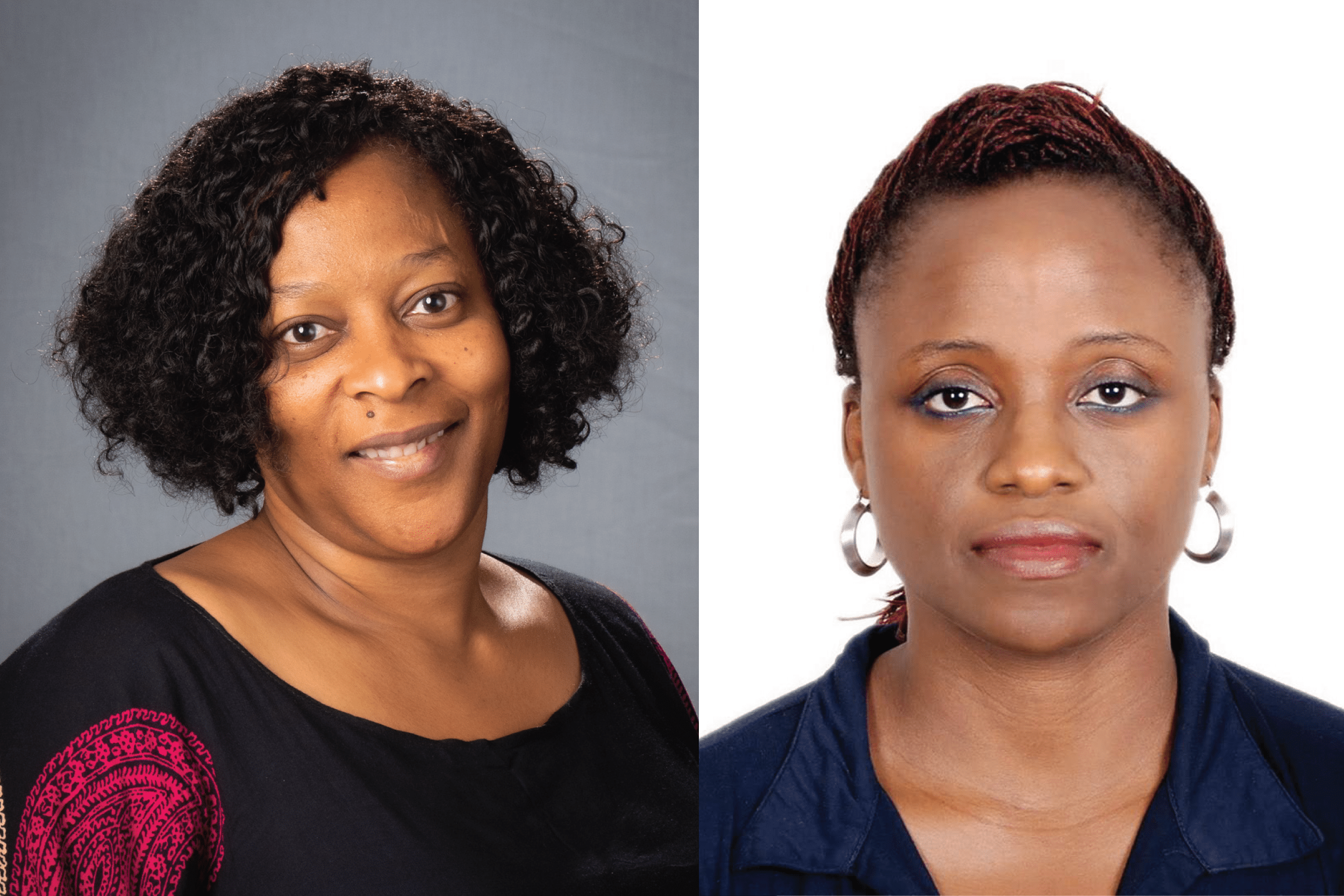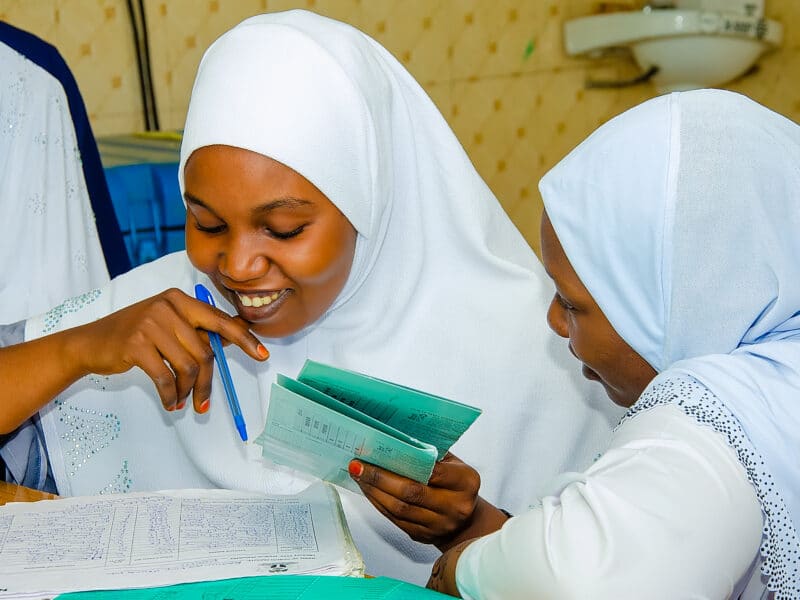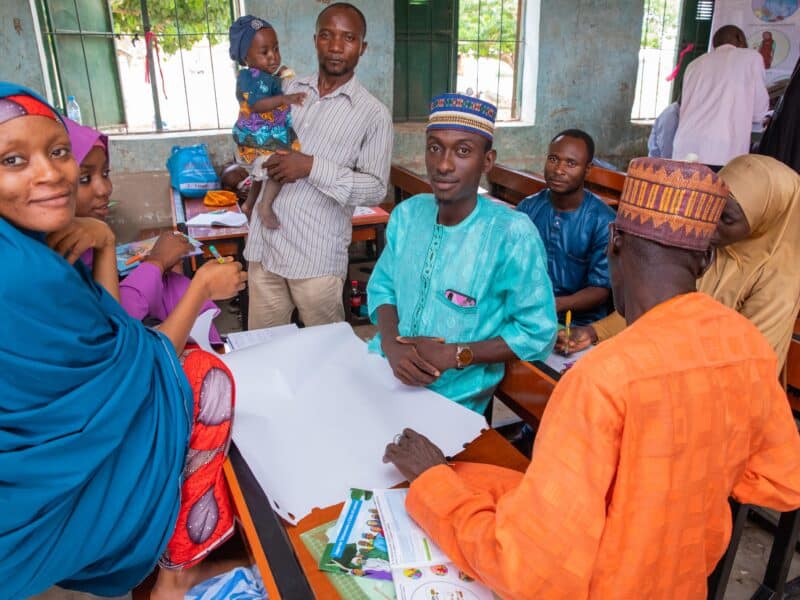Nigeria has the highest tuberculosis burden in Africa. According to the Lancet Infectious Diseases, TB incidence rose in Nigeria from 418,000 cases in 2017 to 429,000 cases in 2018, and deaths also rose from 155,000 to 157,000 within the same period. Only one in four people with TB are estimated to get proper diagnosis and treatment, allowing the disease to spread.
In light of these statistics, CCP’s Breakthrough ACTION-Nigeria project is launching Check Am O! (Go and Check It!) to help detect new cases. It’s a multimedia campaign to promote testing and treatment of TB across Nigeria and will be broadcast on television, radio and social media. Volunteers will meanwhile work within communities across Nigeria to promote free testing and treatment of tuberculosis.
For World Tuberculosis Day (March 24), CCP’s Kanika Campbell sat down with CCP’s Dr. Bolatito Aiyenigba, deputy project director for malaria and tuberculosis for Breakthrough ACTION-Nigeria, and Debby Nongo, tuberculosis program assistant with USAID, which funds Breakthrough ACTION.
Kanika Campbell: In your words, describe this new TB campaign.
Bolatito Aiyenigba: The Check Am O! (Go and Check It!) campaign was designed to get people to the facilities to be tested for tuberculosis. With the COVID-19 pandemic, people were scared to go to the facilities. People were saying, “If I go, I will be quarantined.” We had to redesign the campaign so that it speaks to both COVID-19 and TB – not everyone that is coughing has COVID. It could be something else. The campaign allows people to be comfortable that they are able to attend the facility and get tested for TB.
KC: What makes this initiative so unique? How is this different to what’s been done previously for TB in Nigeria?
BA: Previously, the TB community in Nigeria had been very clinical, very focused on the patients who have already been diagnosed. Meanwhile, there was the issue of low case findings.
So, Breakthrough ACTION-Nigeria supported the National Tuberculosis and Leprosy Control program (NTBLCP) to find out why TB cases were not being diagnosed and treated. During the discovery phase of a human-centered design process, we found that when people had coughs, neither they nor their health care providers were immediately considering TB as a possible cause.
So, you will see someone who is going to a medicine vendor repeatedly and is getting medicine for a cough, but it will not cross his mind or the mind of the vendor to think of TB. They think of other things, but not TB. We also see it in the medical facilities. A patient will come in multiple times with the provider wondering “what is wrong with you?” And then TB will be thought of much later after complications have set in or after seeing another provider. Our question was, how do we get people to think of TB first, instead of waiting until they have visited the health facility multiple times? How might we make TB more prominent in the list of possible diagnoses for people who have had a cough for more than two weeks?
Debby Nongo: There hasn’t been a campaign that is TB-specific in Nigeria, outside of larger events such as World Tuberculosis Day. It is the first time we used a scientific process to develop messaging around TB to determine what would make sense to the audience. Field tests were done, and message crafting was holistic and inclusive. We talked to many stakeholders including patients and family members affected by TB. This is something that is Nigeria specific, that resonates with Nigerians, that can achieve the desired behavior change that we’d like to see. It is very different than just having a theme for a one-day event like World TB Day and then everyone moves on.
KC: What led to the development of the campaign?
DN: As a country, we’ve struggled with finding TB cases. We are really good at treating them once we do diagnose them but identifying and diagnosing people with TB has always been a struggle. Our estimated case burden is more than 400,000 and the highest we’ve ever identified is 130,000. Even in the short period that we’ve had these SBC strategies, we’ve already seen a good yield in case findings.
A few years ago, we realized that just because we’ve invested so heavily in making sure services were available, it didn’t mean that people would demand those services. It became apparent that until we specifically and strategically targeted demand creation for TB, we would continue to only find people who were really sick and eventually made it to the hospital where they were correctly diagnosed. USAID Nigeria decided to invest in a human-centered design approach that would answer the questions around health seeking behaviors by TB patients. What are those factors that inhibit people from seeking care on time, if they do have symptoms suggestive of TB? That process led to the development of the Check Am O! campaign.
KC: Why is it so important to Nigeria?
BA: It is important so that we can find the missing TB cases. The current case finding is only around 26 percent, meaning 74 percent of cases aren’t detected or reported and these people may be transmitting TB to others in the communities. The gap shouldn’t be that wide. The aim of the campaign is to encourage people vulnerable to TB to go to the health facilities to get tested for TB. We’re hoping that the campaign will be nationwide for maximum reach and impact.
KC: What about this initiative are you most proud of?
DN: Super Bikes (motorcycle) clubs hold an annual week-long traveling event in Nigeria, and this year they adopted the theme of “COVID-19 stops with me.” We partnered with the SuperBikes clubs and asked them to also share the messages about TB. While traveling to the different states, each stop included information about TB, using the Check Am O! slogan. It was interesting seeing the macho bikers sending out messages and seeing the impact it had on people they spoke to. This has the potential to make a huge difference. In Nigeria, TB is almost three times more prevalent in men than women. And we’ve struggled to reach men with TB messaging and care. Watching the bikers send out the message and take it seriously, for me it showed that if this campaign does nothing else but give us an opportunity to reach men, we’ve done a whole lot.
KC: What lessons do you think others implementing TB programs around the world can learn from this campaign?
DN: The process was long and tedious, but it was worth investing the time to get it right. To do the work, ask the questions, involve everybody. Definitely use human-centered design as your starting point. Being an outsider, in the TB sense, when I joined the TB project at USAID I found that most of the people that work in TB are medical personnel. They know how to treat TB, but not how to work the SBC process, to help people understand how to seek care for suspicious coughs. However, my experience was that even when it became apparent that demand creation was the way to go, the doctors wanted to do demand creation their way and they got it wrong. Thinking outside of the box is necessary.





